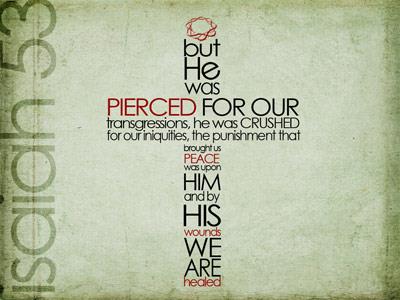-
"The Cross And The Fiery Serpent"
Contributed by Clark Tanner on Nov 28, 2017 (message contributor)
Summary: The fiery serpent raised up by Moses in the wilderness is one of the most striking types of the cross of Christ in all of scripture.
"Then they set out from Mount Hor by the way of the Red Sea, to go around the land of Edom; and the people became impatient because of the journey. The people spoke against God and Moses, “Why have you brought us up out of Egypt to die in the wilderness? For there is no food and no water, and we loathe this miserable food.” The Lord sent fiery serpents among the people and they bit the people, so that many people of Israel died. So the people came to Moses and said, “We have sinned, because we have spoken against the Lord and you; intercede with the Lord, that He may remove the serpents from us.” And Moses interceded for the people. Then the Lord said to Moses, “Make a fiery serpent, and set it on a standard; and it shall come about, that everyone who is bitten, when he looks at it, he will live.” And Moses made a bronze serpent and set it on the standard; and it came about, that if a serpent bit any man, when he looked to the bronze serpent, he lived. "
I think it was an old sermon of Spurgeon’s I was reading one day wherein he asserted that the cross of Christ can be found on every page of the Old Testament. I know he’s not the only one ever to have made that observation but he’s the one I remember.
What he meant by that is that the very lives of old testament saints and the subsequent recording of their stories in what came eventually to be what we call the Old Testament were designed by God to reveal His Christ; not to the eyes and minds of those who lived and wrote the Old Testament accounts, but to those on this side of Calvary who go back and read and have Christ and His cross revealed to them in those scriptures.
We remember that Jesus told the scoffing Pharisees that the scriptures bear witness of Him but that their deliberate blindness to truth prevented them from seeing it. John 5:39
Again, on the road to Emmaus after His resurrection as He walked with the two discouraged disciples He explained to them things concerning Himself in ‘all the scriptures’. Of course we understand the reference to the scriptures to mean what we call the Old Testament.
Hebrews 1:1 says that in times past God spoke to the prophets in many portions and many ways. One of those ways was through what modern students of the Bible call ‘types’ or ‘foreshadowings’. An example of a type would be the lamb that was sacrificed and the blood placed on the door of the Israelite’s homes on the night of the first Passover, when God struck down the firstborn of the Egyptians and delivered the Children of Israel from slavery. We understand the lamb to be a type of Christ who was sacrificed so we might be delivered from slavery to sin. That is a ‘type’ or ‘foreshadowing’ of Christ.
No place in scripture do we find a more striking type of the cross of Christ than here in Numbers 21, with the raising up of the fiery serpent by Moses. Jesus confirmed out of His own mouth that this was a foreshadowing of His cross as He talked with Nicodemus in John chapter 3.
"As Moses lifted up the serpent in the wilderness, even so must the Son of Man be lifted up; so that whoever believes will in Him have eternal life". John 3:14, 15
So let’s go to our text passage and see what the Lord will say to us in it today.
THE SETTING
It is the time of Israel’s wandering in the wilderness. God has been with them to provide for them and protect them. In chapter 20 we’re told with no fanfare that Miriam, Moses’ sister, died at Kadesh in the wilderness of Zin.
Now I know that means a great deal to you, as all of us are very familiar with the geographical layout of the middle east about 3,400 years ago.
If you study your maps later you may find Kadesh-Barnea in the southern most region of what we call Israel. You’ll see it on your map of the wanderings of the children of Israel. Going east from there across the Jordan is the area referred to in our text as Edom.
Moses led them south, away from the direction they had been taking, and then took a circuitous route around Edom, probably to avoid enemies there, which made their journey tedious and uncomfortable, which is probably why they were whining against him again here in verse 5.
More specifically, and very important to point out, is that they complained against God and His man, Moses. We’ll get to that.

 Sermon Central
Sermon Central



